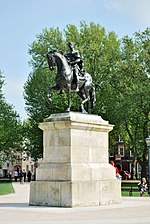Boleh (yacht)
1949 shipsAll pages needing cleanupSail training shipsSailing rigs and riggingSailing ships of England ... and 2 more
Ships and vessels on the National Register of Historic VesselsWikipedia introduction cleanup from December 2020

Boleh (the name means "Can do" in Malay) is a junk yacht built in Singapore in 1948-9 by Commander Robin Kilroy DSC Royal Navy, and now based in Chichester Harbour and operated along the South coast of England by the Boleh Trust.
Excerpt from the Wikipedia article Boleh (yacht) (License: CC BY-SA 3.0, Authors, Images).Boleh (yacht)
Redcliffe Wharf, Bristol Redcliffe
Geographical coordinates (GPS) Address Nearby Places Show on map
Geographical coordinates (GPS)
| Latitude | Longitude |
|---|---|
| N 51.449 ° | E -2.592 ° |
Address
Redcliffe Wharf
Redcliffe Wharf
BS1 6SR Bristol, Redcliffe
England, United Kingdom
Open on Google Maps









